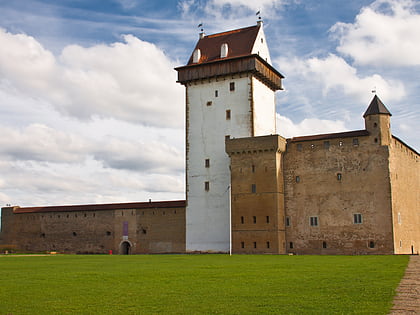Narva Waterfall, Narva


Facts and practical information
Narva Waterfall, situated in the border city of Narva, Estonia, is a natural spectacle steeped in history and cultural significance. Once considered one of Europe's most powerful waterfalls, it boasts a width of up to 300 meters during its peak flow in spring. The waterfall is located on the Narva River, which forms a natural border between Estonia and Russia.
Historically, the Narva Waterfall has been a valuable source of energy. In the 19th century, it powered numerous mills and plants, contributing significantly to the industrial development of the region. However, the construction of the Narva Hydroelectric Station during the Soviet era drastically reduced the waterfall's flow, leaving only a small portion of its former glory visible.
Despite the diminished flow, the Narva Waterfall remains an important landmark and tourist attraction. Visitors are drawn to its scenic views and the historical Narva Hermann Castle, which stands proudly on the Estonian side of the river, overlooking the waterfall. The castle, along with the Ivangorod Fortress on the Russian side, provides a glimpse into the tumultuous past of the region, marked by centuries of conflict and power struggles.
The waterfall is easily accessible to tourists and is a highlight for those visiting Narva. While its volume is at its most impressive during the spring thaw, the waterfall can be viewed year-round. The area around the waterfall also offers peaceful spots for picnics and leisurely walks, making it a pleasant destination for a day trip.
Narva
Narva Waterfall – popular in the area (distance from the attraction)
Nearby attractions include: Narva Museum, Hermann Castle, Swedish Lion, Alexander's Cathedral.
Frequently Asked Questions (FAQ)
Which popular attractions are close to Narva Waterfall?
How to get to Narva Waterfall by public transport?
Train
- Narva (18 min walk)
Bus
- Narva Bus Terminal (19 min walk)







